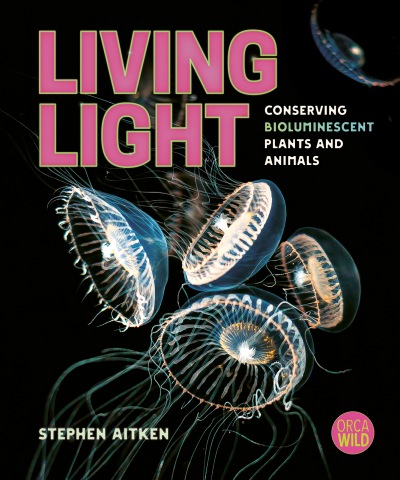Living Light: Conserving Bioluminescent Plants and Animals

Living Light: Conserving Bioluminescent Plants and Animals
Was this an alien visitation? A supernatural event? Few people on the planet have seen it, and science had no explanation for it- until now. It is sometimes called a milky seas event because the luminous ocean water has a glow to it that makes it appear opaque and milklike. Clear skies appear black, but if there are clouds above, they become illuminated by the glowing waters. Samples taken by biologists during one of these events off the coast of Yemen over 30 years ago showed high concentrations of bioluminescent bacteria attached to fragments of algae. With algae as a food source, the bacteria spread over a wide area of ocean water, as large as thousands of square miles. This occurrence is rare and can be found in remote Southeast Asian waters, so it escaped rigorous scientific study for many years. And this is not the only mass glowing event that takes place in the ocean. Sometimes they occur closer to coastlines.
Part of the “Orca Wild’ series, Living Light: Conserving Bioluminescent Plants and Animals” explores the fascinating and mysterious world of bioluminescence. The subtitle is somewhat of a misnomer because the majority of the book is devoted to the plants and animals that create their own light, and it isn’t until the last few chapters that readers will learn about the importance of saving these unique life forms. Biologist author Stephen Aitken’s passion for the book’s subject is most evident in the writing. He explains how various animals make light and the purposes of their light: to communicate, attract prey, feed, reproduce and defend themselves. Some of these creatures include jellyfish, insects, corals, squid, fish, brittle stars, shrimp and millipedes.
Most readers probably find bioluminescent organisms compelling because of their uniqueness and their ability to make light. Many of the plants and animals dwell in the deepest ocean waters and can only be studied with the aid of pressurized submarines, making them even more mysterious. However, what also makes them extremely interesting is that they are valuable to scientific research as it pertains to human health and ecology. Some examples of health-related research include tracking cancer cells, Chagas disease, dengue fever and malaria. (Interesting fact: During the American Civil War, some injured soldiers who had been left on the battlefield developed glowing wounds. These wounds were attributed to bioluminescent bacteria present in the soil which prevented deadly bacteria from entering the soldiers’ bodies, thus saving their lives. Hence the term for this phenomenon is “Angel’s Glow”.) Scientists are also working on using bioluminescent proteins to help the environment. For instance, modified potatoes glow green when they need water, thus conserving an important resource while, in the future, bioluminescent plant species might flank doorways and paths thereby lighting the way for people while eliminating the need for electricity and fossil-fuel consumption for that purpose. To detect landmines which are increasingly made of plastic or wood and, therefore, render metal detectors useless, scientists are developing modified bioluminescent bacteria that light up when TNT is found. The final chapter of the book highlights the threats to the survival of bioluminescent creatures: habitat loss, fishing boats that employ powerful lights, dragnets, bleached coral reefs, deep-sea mining and oil and gas exploration. There is also information about artists whose creations are inspired by bioluminescence and sometimes even composed of luminous bacteria which, as they multiply, result in ever-changing works of art.
Additional sidebars and text boxes provide related information while illustrations, consisting of drawings, diagrams and photographs, are very well explained and further readers’ understanding of the concepts.
A table of contents, a glossary and an index are included as well as a list of print and online resources.
Though the topic of bioluminescence has been covered before, Living Light: Conserving Bioluminescent Plants and Animals, a well-written book, takes it to the next level. Highly engaging!
Gail Hamilton is a former teacher-librarian in Winnipeg, Manitoba.
